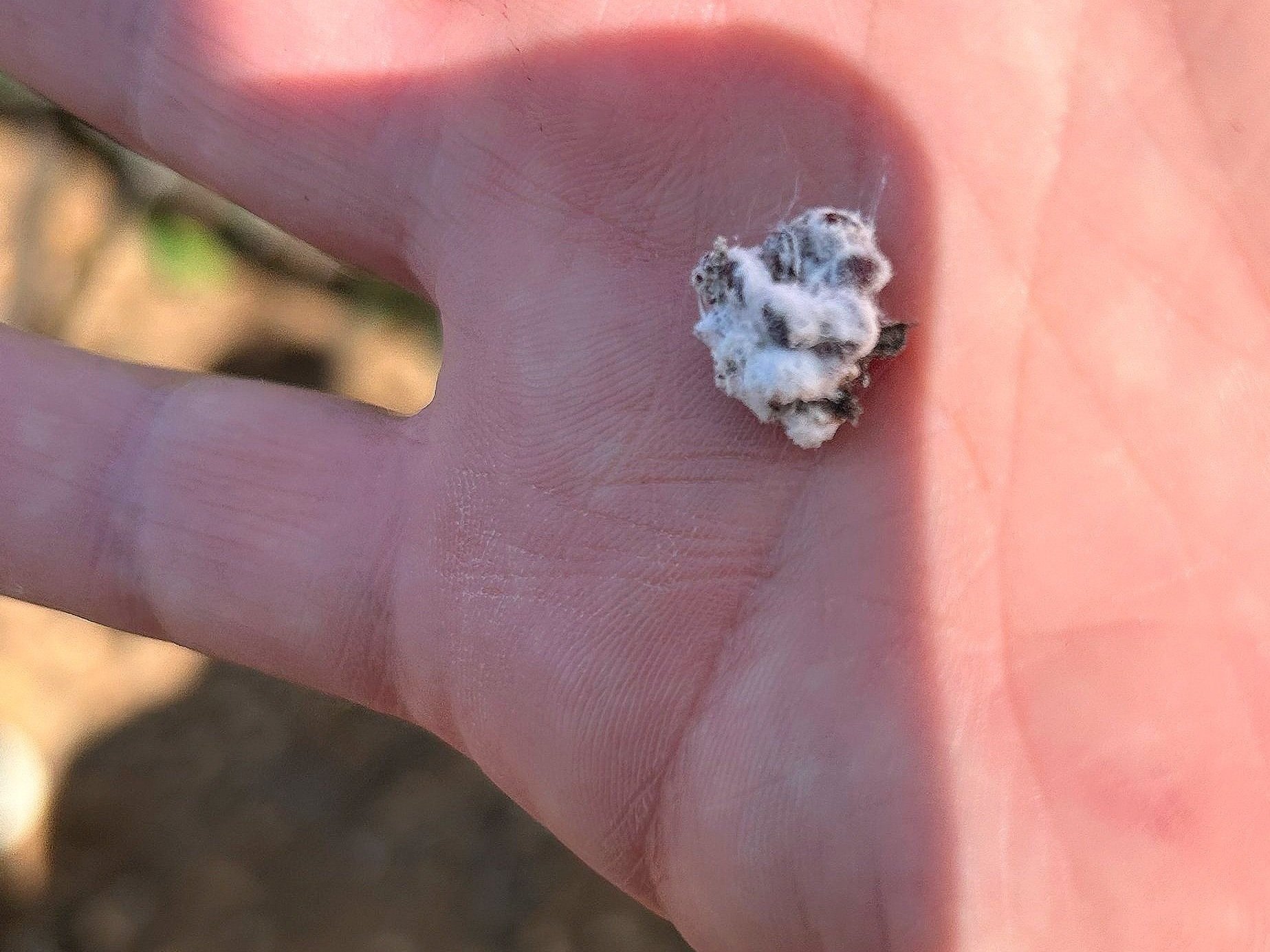Carmine, a Vibrant Red Dye
A smashed chochineal insect shows the white and black of the exterior of the insect and the red interior which is carminic acid and can be used to turn into a red dye. Photo by Keith Driver.
My Armo sent me a WhatsApp that said “I met this cool guy. I’m going to wake you up to tell you about it.” I asked where he met the guy and he said, “In a bar.” lol! Of course. I will attest he meets cool people in bars as that’s where he also found me.
“The guy” happens to be Keith Driver who is with Propel Ventures and one of their projects is working with a natural red dye, carmine. The red dye holds a special place in our hearts because I remember seeing the insects on prickly pears in Texas as a kid and My Armo was familiar with the dye from a historical context of the red dye representing a level of wealth a person has since the dye was so expensive.
With the banning of red 3 and the potential of other artificial colors being eliminated within four years, carmine will likely take place of those dyes in many foods with a vibrant red color.
Keith agreed to do a guest blog about the natural red dye, carmine. The photos are from his recent trip to Mexico and he also provided links for more reading at the end of the post.
Carmine, a Vibrant Red Dye
Keith Driver
Carmine, a deep red pigment used in food, has a long history dating back to ancient civilizations. It is derived from the cochineal insect (Dactylopius coccus), a small parasitic bug native to Central and South America. These insects live on prickly pear cacti and produce carminic acid as a natural defense against predators. To make carmine dye, the insects are harvested, dried, and crushed to extract the pigment, which is then processed into a stable, water-soluble colorant.
The use of cochineal dye dates back to the Aztecs and Mayans, who valued it for its vibrant red hue in textiles and art. After the Spanish conquest of the Americas in the 16th century, cochineal became one of the most valuable exports to Europe, where it was used in fabrics, cosmetics, and eventually food. By the 19th century, synthetic dyes began replacing natural pigments, but carmine remained prized for its stability and non-toxicity compared to some artificial alternatives.
Cochineal insects live on the pads of prickly pear. Photo by Keith Driver.
Cochineal insets are about 5 mm or less than 1/4” in size and native to Central and South American. Today it can even be found in the southwestern United States. Photo taken in Mexico by Keith Driver.
Today, carmine is commonly found in a variety of food products. It is used in fruit-flavored yogurts, ice creams, candies, and even some soft drinks. Many processed foods labeled with "natural red color" or "E120" contain carmine. It is also used in certain meat products, such as sausages, to enhance color. While carmine is a natural dye, it has drawn controversy due to its insect-based origin, leading some vegetarians, vegans, and allergy sufferers to avoid it. However, it remains a widely used and FDA-approved colorant in the food industry.
Despite the availability of plant-based alternatives like beet juice or annatto, carmine continues to be favored for its intense, stable red color, making it a key ingredient in many popular food products.





